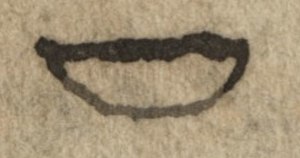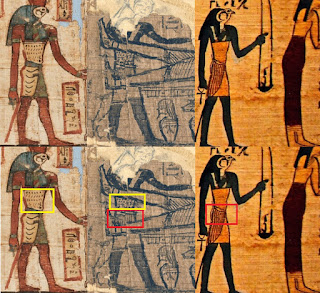Meditation on Dan Vogel's Response of 5/15/2020
Meditation on Dan Vogel's Response of May 15, 2020 Thank you, Dan, for your response. Below is a picture of your response, followed by my reply. First, I agree with you that Parrish and Williams usually were writing at the same time. But we need to account for the fact I drew attention to in my last meditation , that Williams did not write the word "was" and did not write the word "Egyptians," both of which Parrish did write, in the corresponding part of his text, and both of which Parrish had to cross out. Joseph Smith apparently dictated the words, then stopped and corrected them. I believe we agree up to that point. You propose that the reason Williams did not write down those words is that he may have been writing slower and thus he had fallen far enough behind that he did not get to that point until after the correction had been made and so he therefore knew not to write the words. However, the word "was" came just three syllables bef


